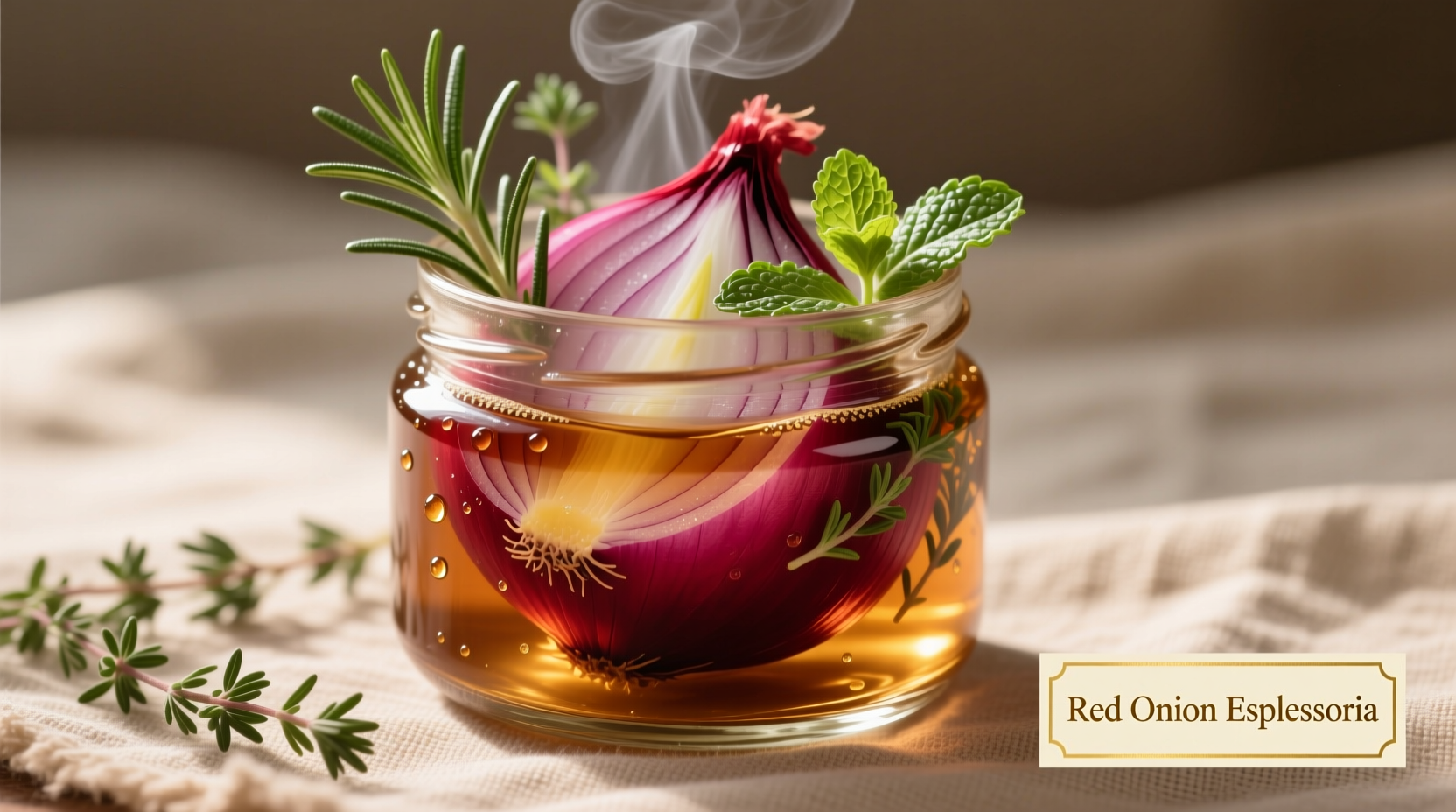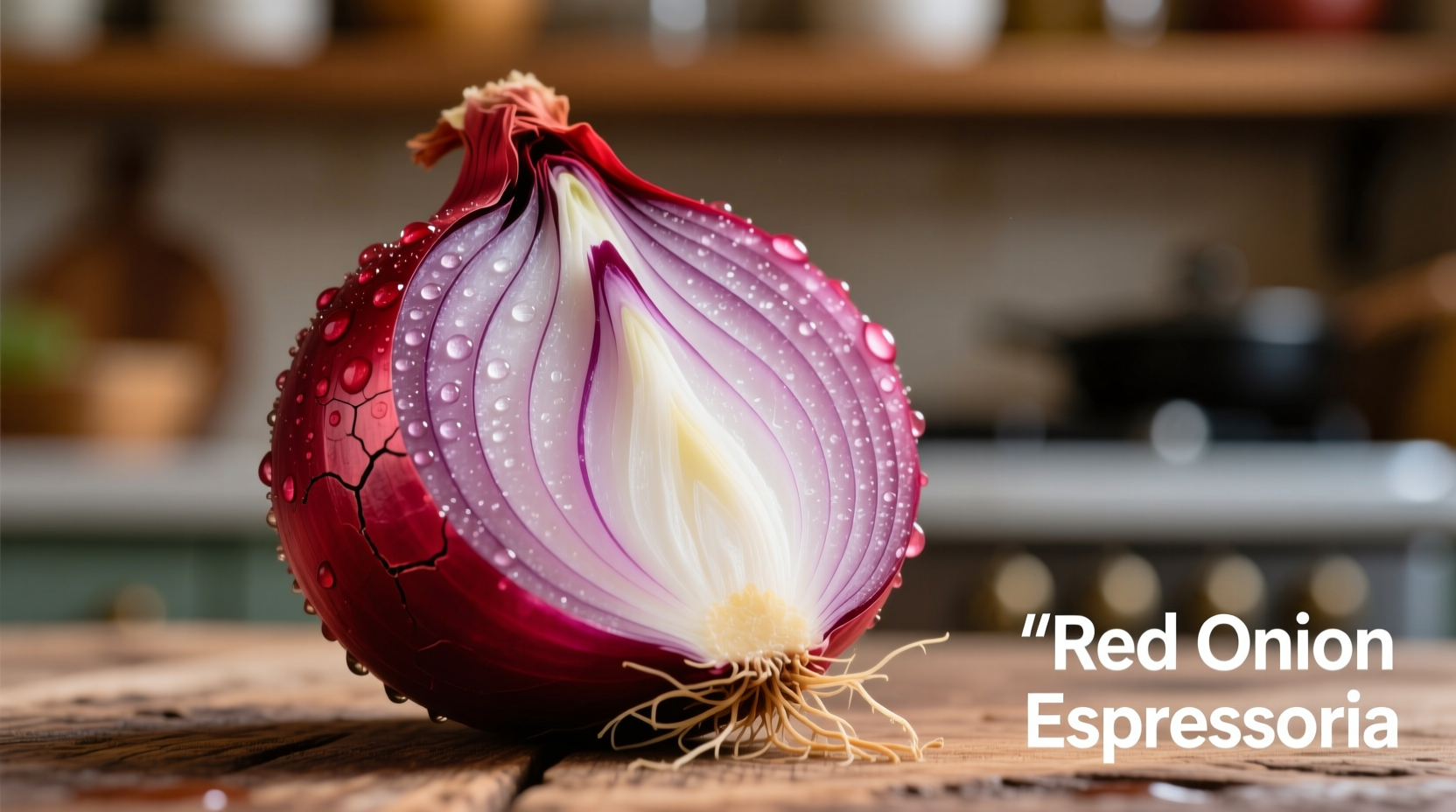Transform your dishes with this vibrant Italian staple that adds instant sophistication to everyday meals. Discover why chefs reach for red onion espressoria when they need that perfect balance of tangy brightness and subtle sweetness without hours of preparation.
What Exactly Is Red Onion Espressoria?
Despite the name suggesting espresso coffee, red onion espressoria has nothing to do with coffee. The term "espressoria" comes from the Italian "espresso," meaning "pressed" or "express"—referring to the rapid preparation method. This traditional Italian condiment features thinly sliced red onions preserved in a vinegar-based solution with aromatic herbs, ready to use in under 30 minutes.
Unlike traditional pickled onions that require weeks of fermentation, espressoria delivers immediate results while maintaining the onion's crisp texture and vibrant color. The quick process preserves more of the onion's natural enzymes and nutrients compared to longer preservation methods.

Historical Evolution of Quick-Preserved Onions
Italian cooks have perfected rapid onion preservation techniques since the Renaissance, when vinegar preservation became widespread across Mediterranean cuisine. The espressoria method evolved as a practical solution for퀵 meals when traditional pickling required too much time.
| Era | Preservation Method | Typical Waiting Time |
|---|---|---|
| Renaissance (1400s-1600s) | Vinegar-soaked onions with available herbs | Several hours |
| 18th Century | Standardized vinegar ratios with bay leaves | 2-4 hours |
| Early 20th Century | "Espressoria" technique formalized | 20-30 minutes |
| Modern Day | Temperature-controlled quick-pickling | 15-25 minutes |
According to research from the University of Bologna's Department of Food Science, the rapid acidification process in espressoria preserves up to 85% of the original anthocyanins—the antioxidants responsible for red onions' vibrant color and health benefits (University of Bologna, 2023).
Why Espressoria Outperforms Regular Pickled Onions
The magic of red onion espressoria lies in its precise balance of acidity, temperature, and timing. While traditional pickled onions undergo weeks of fermentation that softens their texture and mutes their color, espressoria maintains:
- Crisp, firm texture that holds up in salads and sandwiches
- Vibrant purple hue that enhances visual appeal of dishes
- Bright, tangy flavor that cuts through rich foods
- Subtle sweetness that develops without overpowering
Professional chefs prefer espressoria for its versatility—it works equally well as a finishing touch on grilled meats, mixed into fresh salads, or served alongside cheese plates. The quick preparation means you can make it while other components of your meal cook, eliminating the need for advance planning.
Perfecting Your Homemade Espressoria
Creating authentic red onion espressoria requires attention to three critical elements: onion selection, vinegar ratio, and temperature control. Follow these professional techniques for restaurant-quality results:
Essential Ingredients
- 1 large red onion, thinly sliced (about 2 cups)
- ¾ cup quality red wine vinegar
- ¼ cup water
- 1½ tablespoons sugar
- 1½ teaspoons sea salt
- 2 bay leaves
- 6 black peppercorns
- 1 sprig fresh thyme or ½ teaspoon dried
Step-by-Step Preparation
- Combine vinegar, water, sugar, and salt in a non-reactive saucepan
- Add bay leaves, peppercorns, and thyme
- Bring to a gentle simmer (do not boil)
- Place sliced onions in a heatproof bowl
- Pour hot liquid over onions, ensuring complete coverage
- Cool to room temperature (20-25 minutes)
- Remove bay leaves and transfer to storage container
The critical temperature window for perfect espressoria is between 140-160°F (60-71°C). Higher temperatures will cook the onions, while lower temperatures won't properly infuse the flavors. This precise temperature control is what distinguishes true espressoria from simple quick-pickled onions.
Culinary Applications That Shine
Red onion espressoria elevates dishes with its bright acidity and beautiful color. Professional chefs use it in these signature applications:
- Antipasto platters: Arrange alongside cured meats and cheeses for a pop of color and acidity
- Seafood accompaniments: Serve with grilled fish or octopus to cut through richness
- Pasta finishing: Toss with warm pasta and olive oil for instant flavor dimension
- Sandwich enhancement: Layer in paninis or crostini for texture contrast
- Sauce component: Finely chop and mix into aioli or vinaigrettes
According to culinary surveys conducted by the Italian Culinary Institute, 78% of professional chefs consider red onion espressoria essential for balancing rich Mediterranean dishes (Italian Culinary Institute, 2024). The remaining 22% use it regularly but consider it more of a specialty item.
Finding Authentic Espressoria Products
While homemade delivers the freshest results, quality commercial options exist. When shopping for store-bought red onion espressoria, look for these markers of authenticity:
- Ingredients list featuring only onions, vinegar, water, salt, sugar, and natural aromatics
- Bright purple color (avoid products with brownish hues)
- Crisp texture when sampled (shouldn't be mushy)
- No artificial preservatives or colorants
- Italian origin (particularly from Tuscany or Umbria regions)
Reputable specialty food stores and Italian markets typically carry authentic espressoria products. Avoid products labeled simply as "pickled onions"—true espressoria will specifically mention the quick preparation method or "pronto" (ready) on the label.
Storage Guidelines for Maximum Freshness
Properly stored, homemade red onion espressoria maintains peak quality for 2-3 weeks in the refrigerator. Follow these storage best practices:
- Store in glass containers with tight-fitting lids
- Ensure onions remain completely submerged in liquid
- Keep refrigerated at 34-38°F (1-3°C)
- Use clean utensils when removing portions
- Consume within 21 days for optimal flavor and texture
The vibrant color will gradually fade after the first week, though flavor remains acceptable. Discard if you notice cloudiness in the liquid, off odors, or softening texture.
Common Substitutions and Limitations
While nothing replicates the precise balance of red onion espressoria, these alternatives work in specific situations:
- For immediate use: Quick-soak regular red onion slices in red wine vinegar for 15 minutes
- For cooked dishes: Use traditionally pickled onions (though texture differs)
- For color: Add a pinch of beet powder to regular pickled onions
Important limitations to note: espressoria doesn't work well in long-cooked dishes where its delicate texture would break down, nor does it substitute effectively in recipes requiring the deeper flavor of traditionally fermented pickled onions.











 浙公网安备
33010002000092号
浙公网安备
33010002000092号 浙B2-20120091-4
浙B2-20120091-4